House N
- Architects: Sou Fujimoto
- Location: Oita, Oita Prefecture, Japan
- Architects: Sou Fujimoto Architects
- Project Team: Yumiko Nogiri
- Structural Consultant: Jun Sato Structural Engineers
- Area: 150.0 sqm
- Project Year: 2008
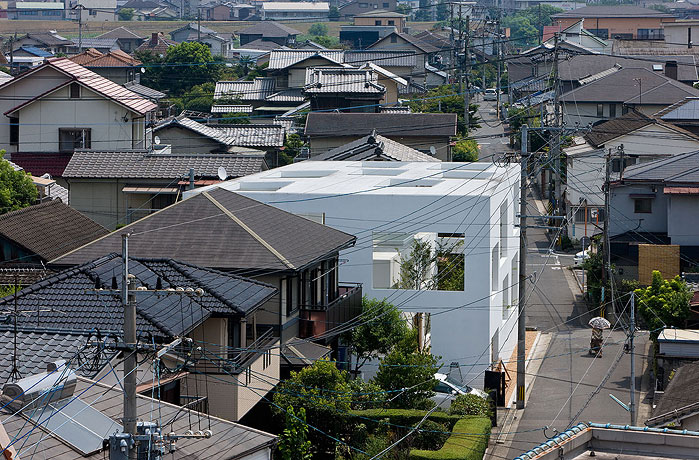
In this typical Japanese district of Oita City on the island of Kyushu – an area dominated by two-storey pitched-roof timber detached homes – lies House N. Glimpsing through apertures, luminous interiors and trees, it appears bright-eyed and bushy-tailed. A modern one story house punctuated by rectangular holes that fill the interior with light and air. The residence consists of three nested boxes that gradually decrease in size to create greater privacy as they pull in from the street. Like a set of nesting dolls, the home shrinks inwards to create small, private and intimate spaces while maintaining a direct connection with the outdoors and the home’s surrounding environment.
‘box-in-box-in-box prototype for collective housing’
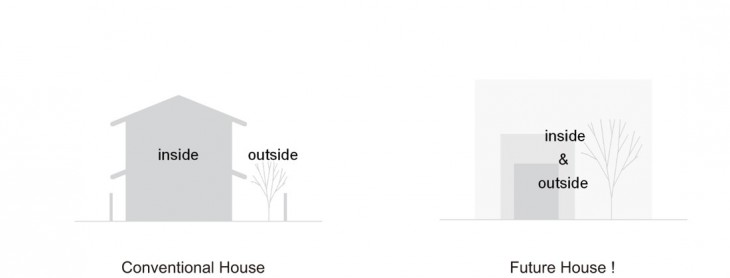
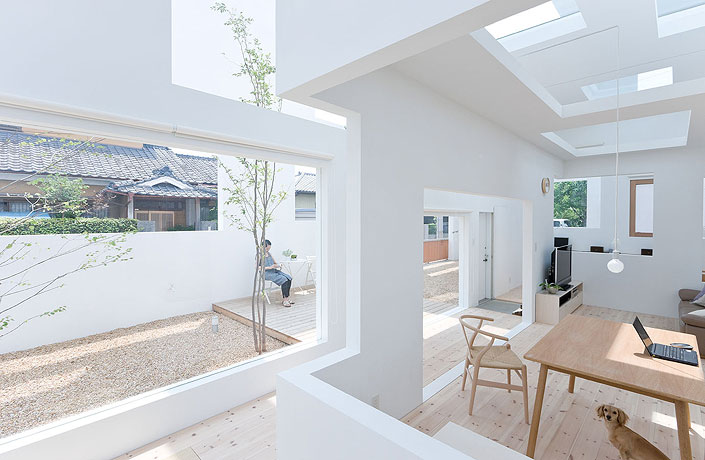
- Architect had doubts about streets and houses being separated by a single wall, and wondered that a gradation of rich domain accompanied by various senses of distance between streets and houses might be a possibility, such as: a place inside the house that is fairly near the street; a place that is a bit far from the street, and a place far off the street, in secure privacy.
- You can see sky & your neighbor house through this house.
- The outer box features a number of large rectangular cuts that delineate the space. Natural daylight, fresh air, and wind and rain are allowed to enter into the home and the courtyard – the middle box contains the home’s actual envelope.
- The outermost box encases a semi-private yard and outdoor living area, which features a wooden deck, trees and garden space. The middle box encases the interior space, the bathroom, and a kitchen situated along the back wall. Finally, the innermost box contains the bedroom, dining and living area. The minimalist concrete home uses the trees as decoration against the white walls.
- Openings have two type of gradation effects . (1) opening to opening feel more open. (2) opening to wall feel privacy.
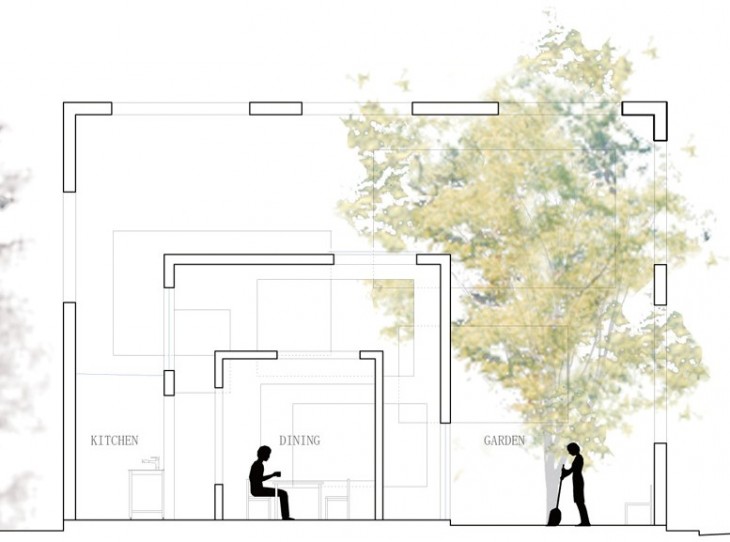
- There is no plan on upper part, where tree is growing,wind flowing and it covered by outer box.
- Here walls are to feel in and to sit beside.
- It suggest me as research topic of Environment Relations “System by energy”.
- It is not architecture, but you put some ruins then it could be architecture.
“Ruins” – If you have such kind of wall without window; without roof it’s ok but,if trees in the structure then you will get some kind of inspiration to starts to behave to the this place.
Saint Jerome The Desert … The Study– Alison Smithson
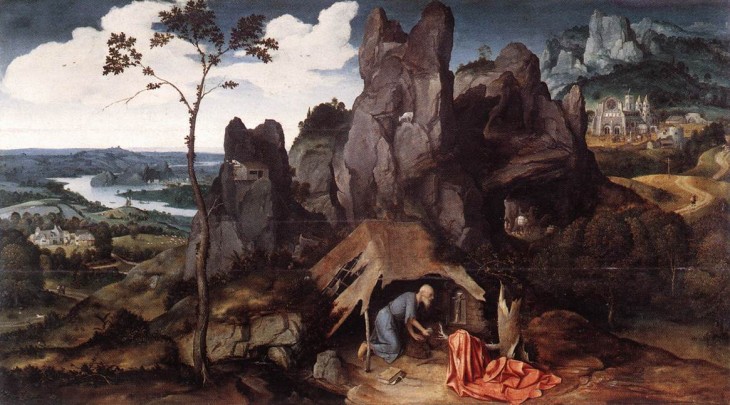
The Habitats of Saint Jerome….
The depicted habitations share a quality of encapsulation and in this sense the images in Renaissance painting of Saint Jerome’s habitats can also be thought of as allegories for the restorative place in nature and the energizing cell supported by urban order.
Whether in nature, or in an urban setting, a place for creative activity will need to continue to rely on its fragment of space being within an enclave en capsuled within a protective territory.
We look at Saint Jerome’s habitations because the 199o’s will see a change in attitudes towards our use of the earth: a use of things without excess; of enjoyment in a less wasteful way. Projecting this foresight of a society becoming more climate, nature, energy resource responsive, the alternative ideals of the habitats of Saint Jerome might be thought to exist in the same fragment of the easily defensible enclave. A merging of the old reciprocity will allow us to begin to think of a new form of restorative habitat for a future light touch in habitation of the earth.
The Habitat of Saint Jerome in the Desert The ideal habitat represented by Saint Jerome’s existence in the Desert is of Jerome outside, exposed. The character of place recognized by the word Desert is where man can expect no support from the sand or rocks but stands alone between the ground and the sky, ringed by horizons that might be infinity; a place where a burned-in-clarity can be available to the mind; a place for a life of asceticism that can have few material temptations; nature so immutable, omnipresent, that man is relieved of responsibility.
Of his Desert activities Jerome wrote to Eustachia: ‘Being angry with myself, would set out solitary to explore the desert: and wherever I would spy the depth of a valley or a mountainous or a precipitous rock, there was my place of prayer.’
In repeatedly utilizing the idea of the ‘Wild’ as a source of creative energy, Europe has, in phases according to cultural period, differently stressed its attractive aspects.
Saint Jerome in the Desert expresses a human desire for the freedom that seems to be in nature; the distinguishable freshness in nature’s cycle of renewal of its complex order and balance.
whether the ideal city supporting the Study was thought of as being a fragment en capsuled in nature, or simply that an upper room in a city.
The timelessness of the ideal is in many of the images of the Study of Jerome.
Summary!
Relation between Alison Smithson’s text and House-N by Sou Fujimoto.
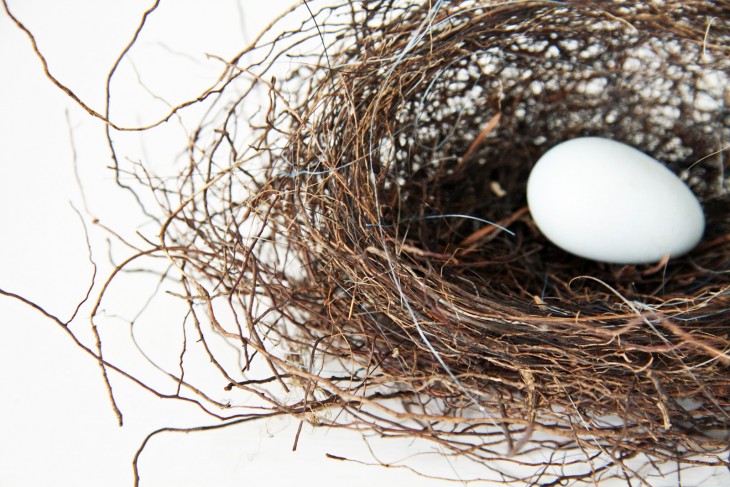
- This image depicts all that Alison is talking about study of Saint Jerome -The DESERT and
- House-N by Architects Sou Fujimoto.
- So it suggested me after a class discussions, research topic of Environmental Relations “system by energy”.
- In House-N Architect Sou Fujimoto created a space between human and environment, by nesting shells which are like enclave but somehow by punctures its is connected with outside environment.
- In Alison’s study of Saint Jerome-The Desert she described about the relation between nature as environment and human as urban. She portray here Saint Jerome in different environmental atmosphere.